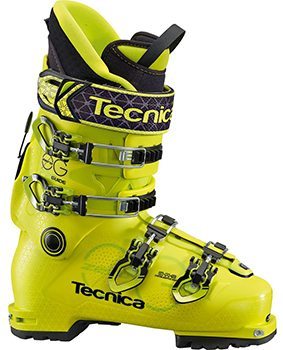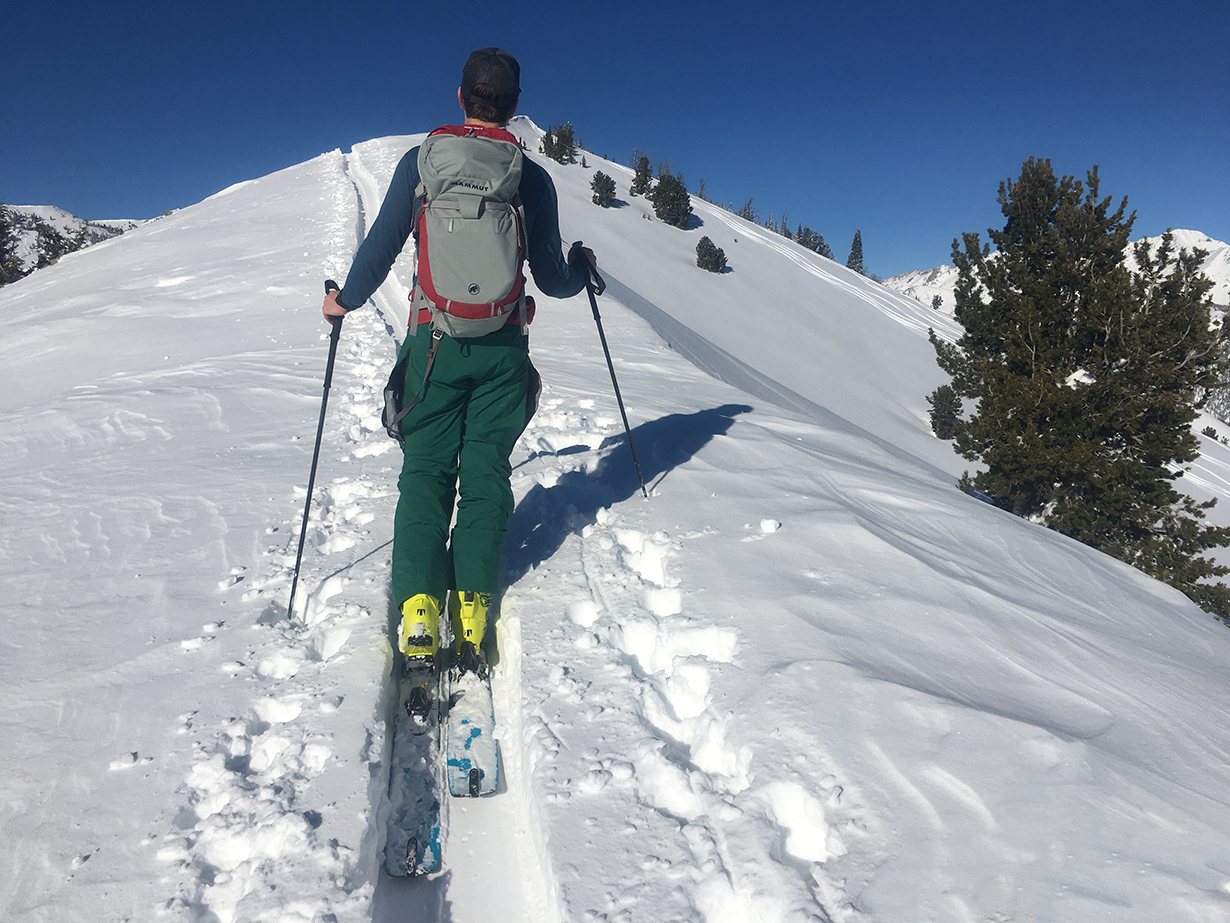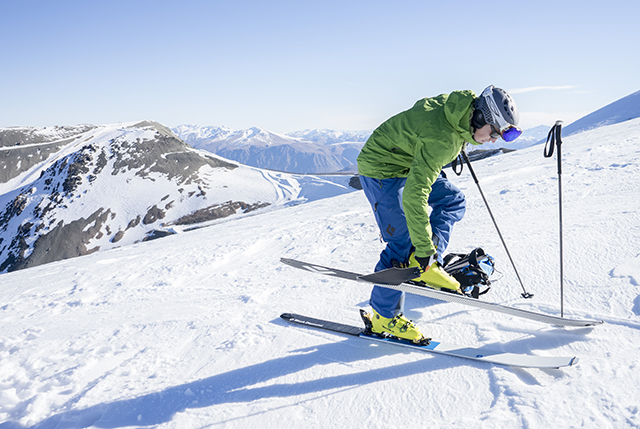
2016-2017 Tecnica Zero G Guide Pro
Size Tested: 27.5
Stated BSL: 315 mm
Stated Range of Motion: 44°
Stated Last: 99 mm
Stated Flex: 130
Stated Weight per Boot (size 26.5) : 1540 g
Blister’s Measured Weight per Boot (size 27.5):
- Shells, no liners: 1335 & 1333 g
- Liners, no footbeds: 220 & 225 g
- Shells + Liners: 1555 & 1558 g
MSRP: $900 USD
Test Location: Porters Ski Area & Craigieburn Valley Ski Area, New Zealand; Alyeska Resort & Turnagain Pass, Alaska
Days Tested: 20+
Intro
I first wrote about the Zero G Guide Pro back in September after just a week of skiing on them in New Zealand. And I talked about my initial impressions of the boots on this Blister Podcast episode.
Since then, I’ve had the boots back in Alaska where I’ve used them for ski touring in Turnagain Pass and lift-served skiing at Alyeska Resort in Girdwood. I’ve also been able to compare them back-to-back with the Salomon MTN Lab, the Lange Freetour XT 130, and with dedicated alpine boots in the same snow on the same skis.

Fit
Caveat: As always, we strongly recommend that you buy your ski boots from your most trusted local boot fitter. Boot fit is very personal, and my experience may not mirror yours.
Overall, I stand behind what I said about these boots back in September. The volume distribution is similar to — but more contoured than — the older Cochise Pro 130.
The only update on fit I have is that, as I’ve spent more time in these boots ski touring and lift-served skiing, I’ve noticed a significant increase in the looseness around my heel and ankle. The liner is relatively thin in this area, and I have had to increasingly crank down the lower buckle on the upper cuff to keep my heel in place. When I only ski the Zero G for a few days straight, this becomes less noticeable. But when I swap out for the Lange XT LV, Lange XT 130 Freetour LV, Salomon MTN Lab, or Nordica GPX, I immediately notice improved retention and security around me heal and ankle.
I think at least part of this is due to the relatively thin liner in the Zero G. For the sake of experiment, I swapped out the stock liner for my ZipFit Grand Prix liners for a day, and had improved retention around my ankle, but still not the same secure fit as my Lange’s.
When bouncing back and forth between the Zero G (with its stock liner) and the Salomon MTN Lab, my heel and ankle are similarly more secure in the MTN Lab despite having half as many buckles. Again, I think some of this is related to the MTN Lab’s thicker liner, but I have a lot of days in the MTN Lab stock liner, and I’m still getting better retention.
I did try gluing on some “C-pads” to give more retention around my heel. This slightly improved retention when skiing, but caused uncomfortable heal pressure while skinning.
The stock toe section of the Blizzard Zero G Pro is ample for my feet, which usually require a 5th metatarsal and / or 6th toe punch (big punches for both were done on my MTN Labs).
Hardware
I’ll talk about the walk mode and the sole blocks below, but I wanted to mention the buckles here since they are relatively unique. Tecnica uses what they call “Lift Lock Buckles,” which hold the buckles away from the boot when unbuckled. At first, I thought this was a little gimmicky, but I’ve found that they do make getting the boots off and on a little easier.
Overall, the buckles, powerstrap, and shell feel refined and well-thought out. After many years of using touring boots with quirky buckles (the La Sportiva Spectre come to mind), ratchet style straps (Scarpa), and lightweight buckles that didn’t cam effectively, it’s great to have buckles and hardware that feel like those on proper alpine boots, yet come as part of a package that only weighs 1550 grams.
Walk Mode
I’ll address the boot’s range of motion in depth, but first wanted to discuss the mechanism of the walk mode itself. So far, I’ve had no play or slop in the mechanism, and no issues with switching between ski and climb mode. The switch itself is relatively small, but I haven’t had any issues activating it while wearing gloves. Some users have reported durability issues with this walk mode, but so far, it’s worked well for me.
Touring / Boot Comparisons
I’ve now spent a lot more time touring in the Zero G Pro. Back in New Zealand, I noted that the boot has less rearward motion than the Salomon MTN Lab. While I still agree with that, I have not found it to be an issue for long days of skinning, including steep skin tracks and long (ish), flat approaches. For those used to zipping around in boots like the Atomic Backland or Dynafit TLT 6, the Zero G Pro is still going to feel heavy, clunky, and limited in range of motion. But for me and my style of skinning, I think they’re very close to as good as the MTN Lab, with the exception that the shorter boot sole length of the MTN Lab allows for a more natural, comfortable stride while touring.

For my foot shape, the Dynafit Vulcan is still the most comfortable boot of the three (Vulcan, Zero G Pro, and MTN Lab) for big days of touring, and has significantly better ROM. But the Vulcan also has the added fidget factor of having to carry around and remove / replace the removable tongues. The Zero G Pro is significantly more comfortable for touring than the Lange XT Freetour due to the significantly lighter weight and better fore/aft range of motion.
As I’ve said in other reviews, the times when I most notice a boot’s ROM is when I’m out of my skis working along rocky ridges or other places where I’m going up and down in my boots on uneven ground. I’ve had occasion to do that a few times this winter, and I’ve had no issues with the Zero G Pro. In this regard, I think the MTN Lab is a little better because of its shorter, more rockered sole, but both boots do fine, and neither is as good as something like the Dynafit TLT6 or Atomic Backland given their significantly greater ROM and an even shorter boot sole.
NEXT: Downhill Performance, Flex, Etc.

Great review Paul!
Did you notice how warm the boots are compared to the other boots? About the same I guess?
Hi Adam, I toured in these several days when the parking lot temp was as low as -18F and my toes got a little chilly but stayed comfortable all day. Fit will have an influence on warmth but, overall, I wouldn’t worry about staying warm in these.
Hi Paul, any basis for comparison between the Zero G Guide Pro and the revised Dynafit Beast FT1 or the Scarpa Maestrale RS? I’m particularly interested in flex (quality & rating) & fit volume. Scarpa just released a redesign of the Maestrale putting it firmly in the 1500-1600g category w/ the boots you discuss in your article.
I’ve tried the Solomon Mtn lab & Dynafit Vulcan, but both are complete nonstarters fitwise, & I’ve never skied a boot with a less progressive flex pattern than the “on-off” Vulcan.
I had a brief opportunity to try on the Khion last season w/ my own Intuition liners, and the last was much closer to that of my sweet-fitting, but relatively soft Dynafit Titan ULs.
Hi Paul, I am also interested it the comparison between the Zero G Guide Pro and the Scarpa Maestrale RS (including comments on the redesigned boot!).
Hi Matt and Travis, I haven’t skied the Maestrale RS in years and haven’t yet received a pair of the redesigned 17/18 boot. Per my recollection, the Zero G is significantly stiffer but I can’t say that with 100% confidence this far out. Dynafit has not sent us a Khion or Beast despite several requests. We’ll try our best to weigh in on the boots you’ve mentioned ASAP.
Nice review Paul.
I’m also interested why there haven’t been any reviews or comparisons of the Dynafit Beast/Khion Carbon. Folks I’ve talked to with experience with the Mtn Lab and Khion seem to gravitate toward the Dynafit boot. Both in terms of performance downhill and touring ability. I’d be curious to hear your thoughts.
Paul, do you think that this boot (and for that matter Mnt lab) has enough to drive a Blackcrows corvus freebird mounted with Dynafit FT 2. My current setup is Factors 130, Dynafit FT, Kastle BMX 108 in 188 and looking to loose as close to 1 kilo per foot as possible without sacrificing downhill performance.
Hi Peter, I haven’t skied the Corvus Freebird (yet!) but I wouldn’t hesitate to ski anything on the setup you’re describing. The Zero G should feel as least as powerful as the Factors, likely stiffer (but fit will impact performance a lot). The BMX 108 is a damper, heavier ski and that does incur some benefit in certain snow conditions and I suspect that the change in skis will make bigger difference than the boots. That said, your Black Crows/Zero G setup sounds super fun to me!
Can you compare this boot to the Atomic Hawx Ultra XTD 130?
Hi, great review Paul. I just picked up this boot based on it. Did you notice however how high the stand height of the boot was? There seems to be substantial mass on the toe and heel lugs creating, what at least appears to be, quite a gap between the ski and the bottom of my foot. I was wondering if you felt this too while clicked in and skiing? Or could it be more of an illusionary issue based on the high arch between the toes and heel…